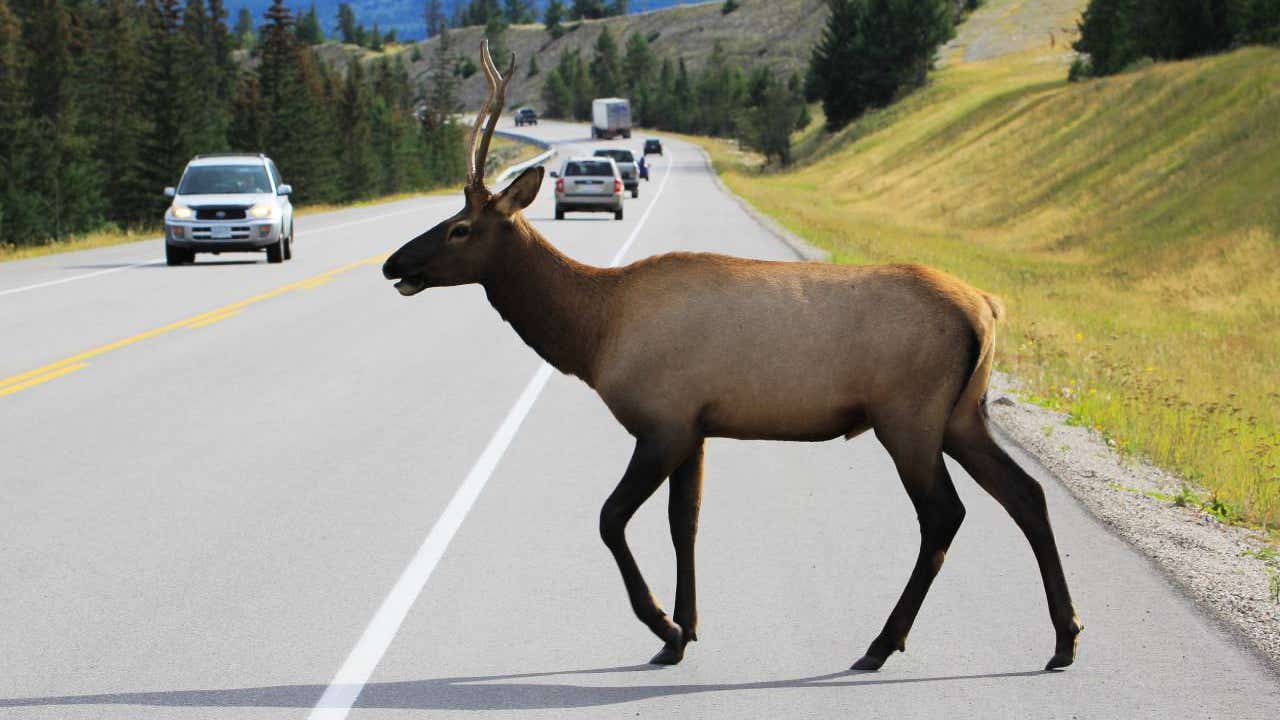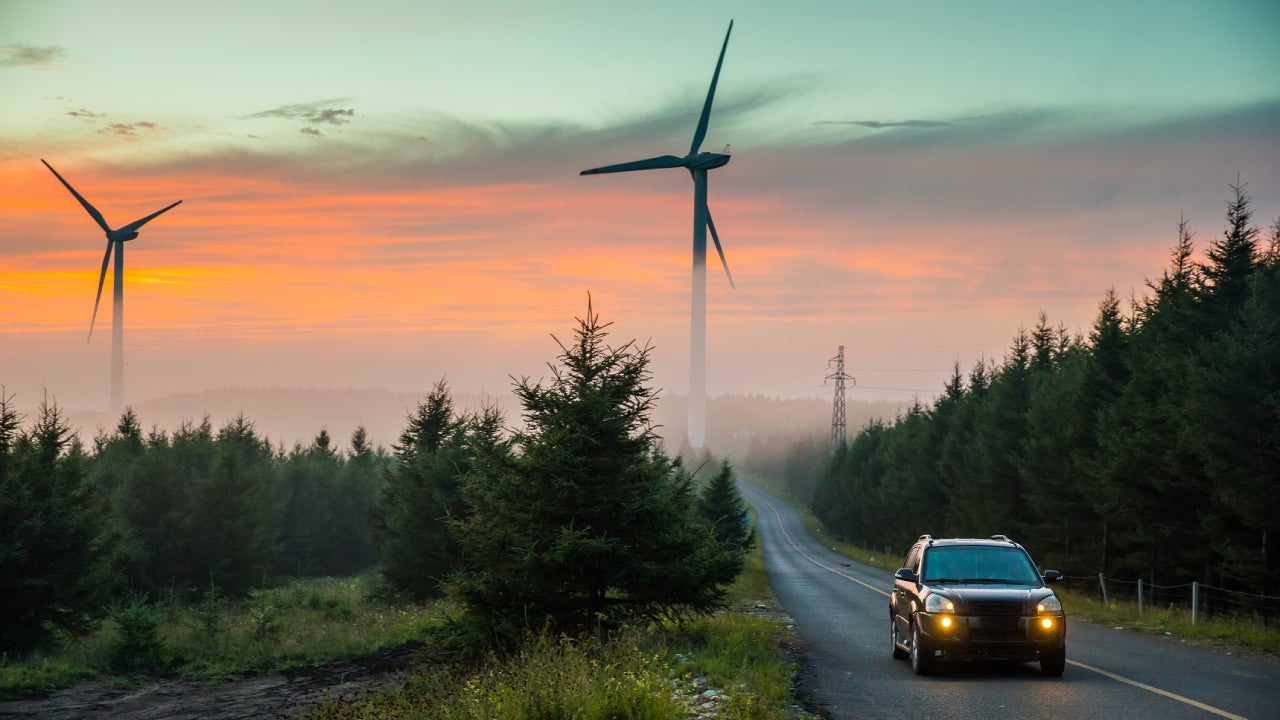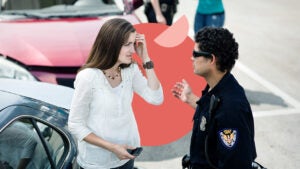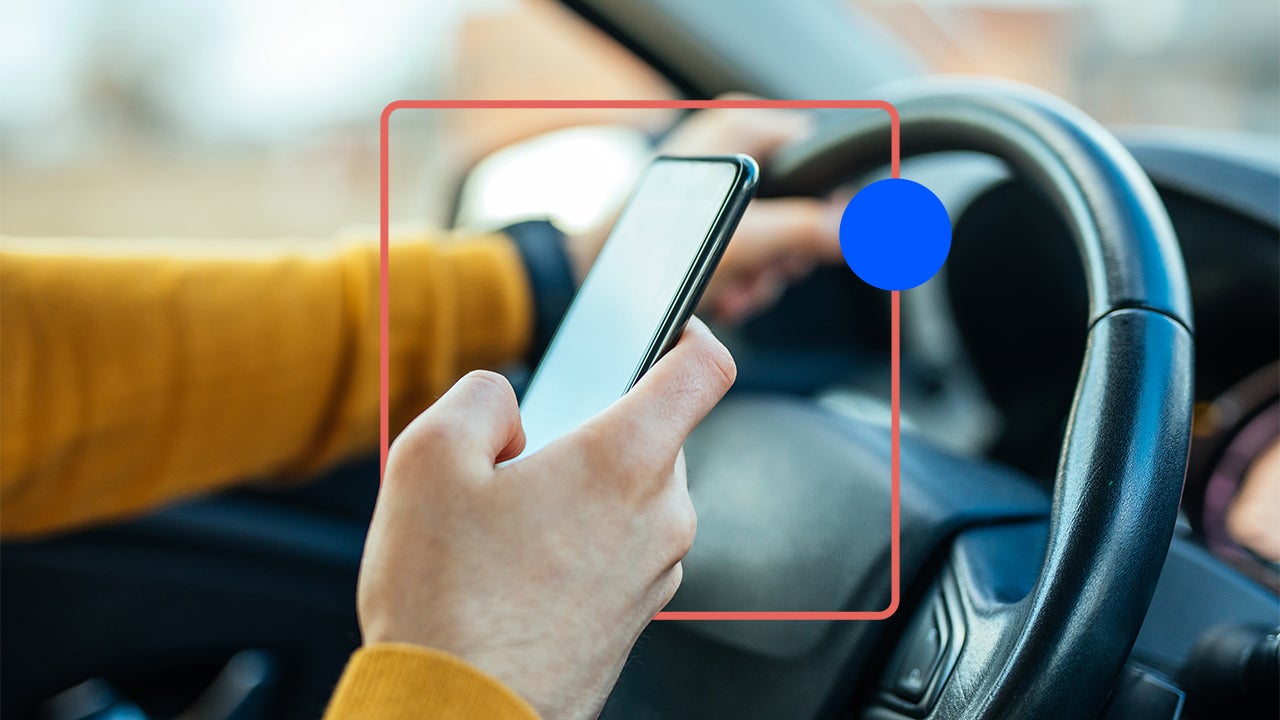Animals and the road: What does insurance cover?

Hitting an animal when you’re driving can be an upsetting — and dangerous — experience. Statistics show that there are more than 260,000 crashes each year in the U.S. involving animals, with roughly 12,000 human injuries and more than 150 deaths. According to data sourced from a State Farm analysis, drivers in the U.S. face a 1 in 128 chance of hitting an animal while driving, with the odds narrowing significantly in high-impact states like West Virginia and Pennsylvania.
- A full coverage car insurance policy will typically cover animal-related damage, including collisions. However, if you swerve to avoid an animal and get into a wreck, your insurer could deem you at-fault for the accident.
- On average, a collision with a deer will result in $1,840 in vehicle repairs and $2,702 in medical expenses. (Federal Highway Administration)
- In 2022, there were a total of 184 fatalities due to vehicles colliding with animals. (Insurance Institute for Highway Safety)
How car insurance covers animal-related accidents
If you have only your state’s required minimum coverage insurance, you will be on the hook financially for damage to your car caused by a collision with an animal.
For coverage for animal-related damage, you may want to consider a full coverage policy. This type of insurance generally includes collision and comprehensive insurance. Collision is what it sounds like — coverage for your car if you’re involved in a crash with another vehicle or property. Comprehensive covers other physical damage, including hitting an animal. Some circumstances may come into play, however, such as whether the animal was someone’s pet or a wild animal. Your insurance agent can answer any policy questions you might have about how a claim will pay out after you hit an animal. Keep in mind that comprehensive and collision both generally have deductibles that you will have to pay if your claim is covered.
Collision with an animal
Imagine a deer dashes out onto the road, you slam into it and crack your front bumper. In this case, the damage will likely be covered by your comprehensive coverage. This particular type of car insurance coverage offers financial protection for events a driver cannot control, such as vehicle theft, flood damage, falling objects and animal collisions. Comprehensive coverage is not required by state law, but if you finance or lease your vehicle, your financial lender will likely require you to carry it.
In this scenario, you would likely need to file a claim, pay your deductible and let your insurer handle the remaining costs. Comprehensive coverage is not to be confused with collision coverage. Collision coverage primarily covers damage that results from hitting another vehicle, a stationary object or a building. Because a deer or other large animal falls outside of these categories, it would be covered by comprehensive coverage.
Swerving to avoid an animal
Let’s look at a different scenario: you swerve off the road to avoid hitting a deer and crash into a fence. In this case, it is up to your insurer to determine if you are at fault. An insurer may conclude that because the swerving maneuver was a choice made by the driver, the driver is at fault for the accident. Regardless of how fault is determined, collision coverage would likely help cover the repair costs if the driver hit a stationary object after swerving to avoid an animal. However, an at-fault accident can seriously impact your car insurance rates. According to rates from Quadrant Information Services, on average, at-fault accidents raise premiums by $840 annually.
A similar question of fault may take place if you slam on the brakes to avoid hitting an animal. While it may not be illegal to stop for an animal in the road, doing so abruptly could cause someone else to rear-end you and your insurer may deem you at-fault for an accident.
If your insurer does not deem you at fault for the accident, it is possible to file a claim under your collision coverage. Keep in mind that filing a claim may also make your car insurance more expensive. Before filing, you may want to get a repair estimate from a trusted mechanic. If the cost to fix your vehicle is close to your deductible, it may be cheaper in the long run to pay out of pocket and avoid a premium surcharge.
Collision with a pet
From an insurance standpoint, your pet is your personal property. While you may think that property damage liability coverage would apply in this case, that is not necessarily true. Property damage liability typically only pertains to damage done to someone else’s property — not your own. If you are at fault for damaging your own property, like if you back into your garage while parking or ding your mailbox when backing out of your driveway, you will most likely not be able to file a claim with your insurance.
Unfortunately, if you injure your pet with your vehicle, you will generally be responsible for the veterinary bills. While your policy may mention pets, they are typically only covered if they are injured while in the car during an accident, and your insurer extends this type of coverage.
Just like how your pet is your property, someone else’s pet is their property. As such, you may rely on your property damage liability coverage to help with veterinary bills if you injure another person’s pet while driving. However, exactly how this plays out will depend on your state’s unique negligence laws. If the pet was off-leash, you might be able to dispute financial responsibility by claiming that the collision was not the result of your negligence.
When am I most at risk for animal-vehicle collisions?
Animal-vehicle collisions (AVC) can happen at any time of day in any season. However, there are some times and places where it pays to be extra-vigilant.
According to the Federal Highway Administration (FHWA), 89 percent of AVC happen on two lane roads — most frequently on straight roads with dry surfaces. The most common times for these accidents are early morning, from 5-9 A.M., and evenings, 4 P.M. to midnight, when animals like deer are more active and likely to be on the roads. Spring and fall see the most AVC. These times coincide with both hunting season and mating periods for many animals, and they are less likely to be paying attention when they bolt across a road.
Based on State Farm’s data, some states see far more AVCs than others. West Virginia leads the pack, with odds of 1 in 40 that drivers will experience an animal-related collision. It’s followed by Montana, Michigan, Pennsylvania and Wisconsin. Perhaps because it is a more populous state, Pennsylvania is in first place in the number of claims filed after an AVC, with more than 150,000 annually.
How to handle animals on the road
With some AVCs resulting in fatal injuries, there are some things to know in the event you encounter an animal during your travels.
Steps when encountering pets
Deer, moose and elk are not the only four-legged creatures you might spot on the road; pets also account for a growing number of AVCs. If you see a lost pet on the road, find somewhere safe to pull over. Errant pets can easily cause accidents and endanger other cars on the road around you. Speaking softly and gently can help calm a frightened pet.
Regardless of whether or not you are able to safely secure the animal, you should contact the local authorities for help, making sure to note your address or local coordinates of where the animal was last seen. Local authorities can dispatch someone to retrieve the pet until the owner is found.
Under no circumstances should you enter a busy road to try and retrieve a pet. That said, if you are able to safely pull over, there are some items you can keep in your trunk to help you secure a lost or escaped pet:
- Carrier – A spare cat or dog carrier can help you safely and comfortably secure a lost pet you encounter on the road.
- Slip leashes – Slip leashes are a quick and simple means to effectively secure an escaped pet and ensure that the animal isn’t able to slip away and into danger.
- Reflective vest – A reflective vest helps ensure visibility, especially if you have to venture into the roadways during hazardous road conditions, like rain or fog.
- Treats – A few treats can help entice frightened pets and establish trust.
- Blanket – A blanket can warm a trembling, scared pet and protect your car from fur or debris.
Steps when encountering wildlife
If you encounter wildlife on the road, there are a few things you should do to ensure both your safety as well as that of the animal:
- Slow down. Reduce your speed to allow more time for you and the animal to react.
- Make the animal aware. Remember the phrase “deer in headlights” and use a flash of your headlights to startle the deer out of shock.
- Use your horn. A honk of the horn can be an effective way to motivate an animal that needs to move out of the way.
- Do not swerve. When you break your path, you significantly increase the chances of a collision and could carry the blame if there is an accident. Instead, stay the course and allow the animal a chance to move out of the way.
What to do after a collision with an animal
No matter how much care you exercise on the road, collisions with an animal can still happen. If it happens to you, here are a few steps you should take.
- Pull over. If possible, find somewhere outside of the path of traffic where you can safely exit your vehicle. Turn on your hazard lights so you can be seen.
- Check for damages. Confirm the safety of your passengers to ensure no one requires medical attention. Assess the state of your vehicle to determine whether it is safe to drive.
- Call the police. The police may need to file a report if there are damages to your vehicle so you can file an insurance claim with your provider. They can also assist an injured animal, direct traffic and clean up any debris from the collision.
- Contact a wildlife resource. Depending on your state, check for local organizations that you can contact for help with an injured animal.
- Document the incident. Use your camera or phone to take photos of the damage and the scene so you can provide them as evidence to your insurance company.
- Contact your insurance provider. Contact your car insurance company to find out further details regarding your coverage and learn next steps to file a claim. If you have roadside assistance, it will likely come in handy following an animal collision.
Tips to avoid animal-vehicle collisions
To help you avoid AVCs on the road, these tips can help.
- Stay aware. It’s especially important to remain alert at dawn, dusk and after sunset when deer are most active and therefore more likely to wander onto the road.
- Slow down. Speeding can not only greatly increase the likelihood of an accident, but also the severity of one. By slowing down, you give yourself more time to react in case an animal moves into your path.
- Follow posted signs. Animal crossings are established by authorities to warn travelers of high-traffic areas for wildlife. Pay particular attention to the roads when these signs are present.
- Drive slowly. Lower speeds can give you precious seconds you need to react, so drive slowly and always remain aware of your surroundings at all times.
- When you see one, expect more. If you see a single deer crossing a road ahead of you, it can be a good idea to stop for a few moments to wait, if possible. Deer travel in herds, and where one animal goes, there are likely to be others following not far behind. This may be true for other animals, as well, and is especially important to remember during periods when young animals might be traveling with their mothers, such as late spring and early summer.
In the meantime, federal, state and local authorities are working to minimize the number of AVCs that occur on U.S. roads each year. The DOT report details 34 different mitigation techniques, including the following:
- Integrated planning efforts
- Wildlife fencing
- Wildlife crossing structures
- Animal detection systems
- Public information and education
In Canada, for example, Alberta’s Banff National Park has shown incredible progress through the construction of 38 wildlife underpasses and six overpasses, all of which have decreased roadkill by an astounding 80 percent.
Resources
If you see a dead animal on the side of the road, contact your local health or sanitation department for cleanup. The Fish and Wildlife Conservation Commission is available 24 hours a day, seven days a week at 1-888-404-3922.
Contact information varies between every city, town and municipality. Our state resource guide can help you find the right organization to help.






